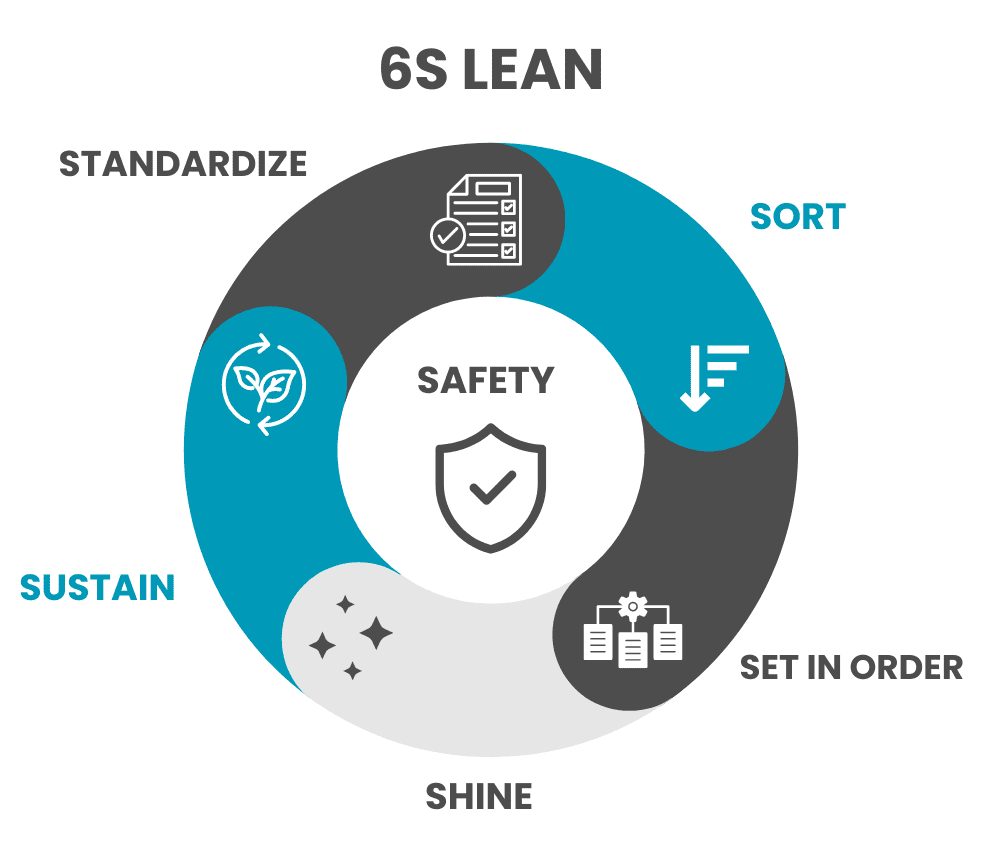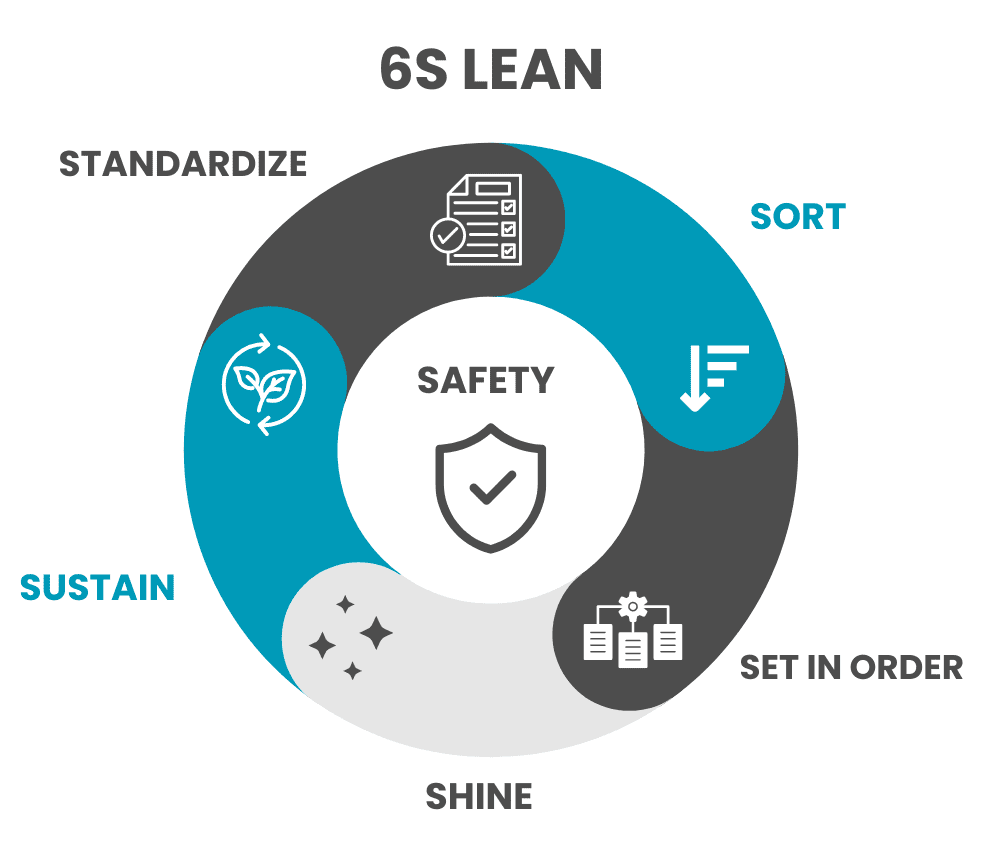In many industries, floor-level contamination control is a critical aspect of ensuring high-quality, safe and efficient processes. Contamination can arise from various sources, such as human activities, machinery, or raw materials. A systematic approach to floor-level contamination control is necessary to maintain a clean and hygienic environment. One such approach is based on the 6s lean method.
What is 6S Lean?
The 6S lean method is a framework for workplaces and organizations that promotes the efficient and effective use of resources while improving quality, safety, and employee engagement.
The 6S’s in the 6S lean method stand for:
- Sort
- Set in Order
- Shine
- Standardize
- Sustain
- Safety

Let’s explore how these principles can be applied to floor-level contamination control.
The Principles of 6S Lean Management
Sort
The first step is to sort out what is essential and what is not. This means identifying what needs to be on the floor and removing anything that is unnecessary or poses a contamination risk. Sorting helps to reduce clutter and create more space, which makes cleaning and inspection easier.
Finding the right contamination control flooring solution at this stage is critical to ensure you minimize the risk of shoe and wheel-borne contamination in your cleanroom environments.
Set in Order
The next step is to establish an organized and structured layout for equipment and materials on the floor. This involves creating a clear visual identification of each item, assigning a proper storage location, and labeling it appropriately. A well-organized floor helps to reduce the risk of cross-contamination, makes cleaning easier, and improves efficiency.
This step ensures you have the best set-up for your cleanroom gowning procedure to eliminate contamination risks during the gowning process.
Shine
The shine step involves cleaning the floor, equipment, and surrounding areas thoroughly. Regular cleaning helps to remove dirt, debris, and other contaminants that can pose a risk to the product or process. It also helps to improve the lifespan of the equipment and maintain a safe working environment for employees.
Standardize
Standardizing involves creating a set of procedures for cleaning and maintaining the floor level. This includes establishing standard work practices, developing cleaning schedules, and conducting regular inspections to ensure compliance. Standardizing creates consistency in the cleaning process, which helps to reduce variation and eliminate waste.
Sustain
The sustain step involves creating a culture of continuous improvement and maintaining the cleanliness and hygiene of the floor. This means involving employees in the process, conducting regular training, and regularly reviewing and updating procedures. Sustaining ensures that the gains achieved in the previous steps are maintained and the floor remains clean and free from contamination.
Long-lasting contamination control flooring can help support this step. With a product lifespan of 3-5 years, Dycem’s polymeric flooring solutions ensure your cleanroom environment maintains its cleanliness and effectiveness for longer than other available products. (link)
Safety
The final step is to ensure that the floor level is safe for employees to work in. This means identifying and eliminating any hazards, such as slippery floors, sharp edges, or exposed wires. A safe working environment promotes employee well-being and reduces the risk of accidents, which can lead to contamination.
Summing up 6s Lean Management
The 6S’s of lean management provides a structured approach to floor-level contamination control, which improves efficiency, reduces waste, and creates a clean and safe working environment. Floor-level contamination control is critical to ensure high-quality, safe and efficient processes. By implementing 6S lean, organizations can maintain a hygienic floor and minimize contamination risks.
